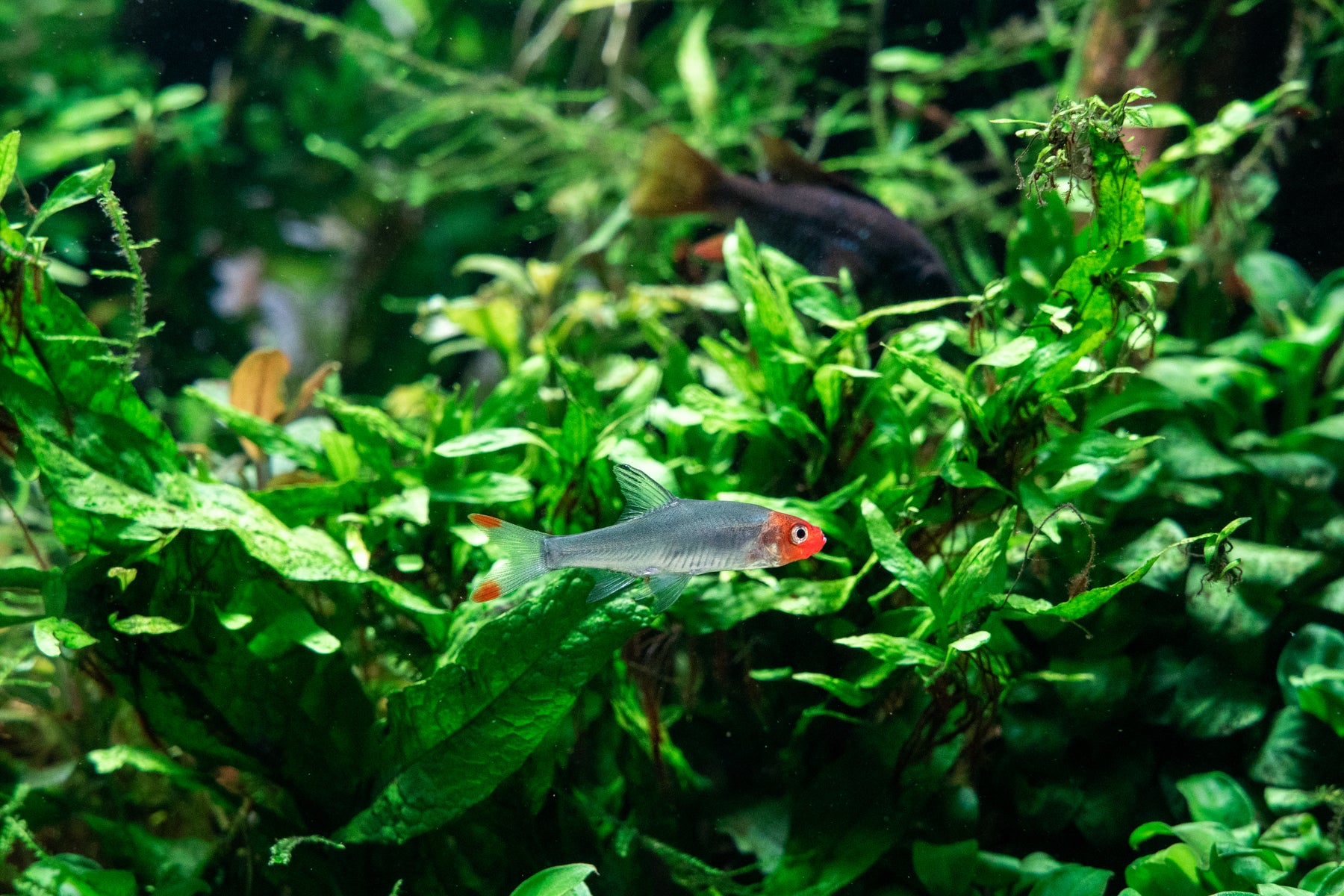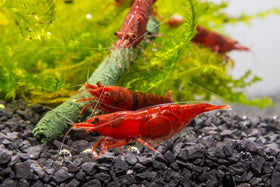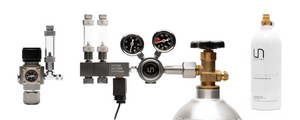
5 Things I Wish I Knew Before I Started Fishkeeping
If you asked me why I bought my first freshwater aquarium, I could give you plenty of reasons. I could talk about the health benefits of watching aquarium fish or the appeal of a statement tank as a conversation piece, but the innate appeal of fishkeeping is intangible and hard to explain.
Aquatic environments are beautiful, exotic, otherworldly, electrifying, foreign and familiar, and sometimes slightly frightening. The idea of encapsulating all of this in a glass box in your living room is romantic and seductive. It also makes it easy to ignore the practical realities of fishkeeping, which often get obscured by the hypnotism of an aquarium.
I know I got into fishkeeping without knowing nearly enough to do it well, but five years on, I’ve picked up more than enough knowledge to help the next round of beginners avoid my own mistakes. Here are some fishkeeping tips and bits of knowledge I wish I had before diving into the hobby:

Pictured: Discus fish
1. There are thousands of different species to choose from
To highlight this point, I want to explain the difference between choosing a freshwater fish species and choosing a breed, as you will if you adopt a dog or cat. This isn’t a narrow technicality, but instead an important consideration when calculating the stakes of this decision. Broadly speaking, a species is a group or population of animals that can interbreed; a breed is a selectively bred (by humans) subset of a species with shared characteristics.
Dog breeds are all part of the same species, so by definition, they have shared ancestors and common genetic material. Different species of fish, on the other hand, do not; they may have evolved in totally separate family trees in different environments on opposite ends of the Earth.
The variety of fish species currently available to hobby aquarists is staggering, and ranges from the small, South American freshwater Neon Tetra, to saltwater stunners like the now-famous Blue Tang, to cold water bottom feeders like any number of catfish. Any species will have its own temperament and water parameters; populating a community tank with multiple species requires finding ones that are compatible in all of these categories.
Fortunately, there are endless resources online to help you make these decisions, as well as the tried-and-true method of asking the staff in your local aquarium supply. The important thing to keep in mind, though, is that your choice of species will affect every decision you have to make down the line, from tank size to décor to feeding. Do your research, and choose wisely.

Pictured: Oryzias sp. Red Cap Medaka Rice Fish
2. Not all water is created equal
As far as most people are concerned, water is water. As long as it’s clean and clear, it’s good enough, and if it’s good enough for you, it should be good enough for your fish, right? No.
Fish live and breathe water all day, every day, so it makes sense that they care more about what’s in their water than we do. This is why the nitrogen cycle plays a huge part in your aquarium's success, which essentially boils down to the levels of nitrates, ammonia, and nitrite. It's important to make sure your tank is properly cycled before adding any fish to the tank and regularly test your water to ensure everything is in order.
Having the correct water parameters is probably the most important thing you can do for your fish, and getting them wrong or failing to maintain them properly is one of the quickest ways to do some serious damage to your fish’s health.
Some of the water parameters, like temperature and purity, are intuitive to understand and relatively easy to maintain. Use an aquarium heater to heat your water and a thermometer to check the temperature stays in the optimal range; a quality filter will clear your water of dangerous buildup of waste and other toxins. You’ll also have to change out the water in your tank regularly to remove fish waste that can cause unwanted ammonia spikes.
In addition to these intuitive parameters, you’ll also have to maintain your water at the proper water hardness and pH. As for pH, you might remember from high school chemistry; it refers to the water’s acidity. Hardness is a measure of certain types of molecules and salts, like calcium and magnesium, in water (but is different from salinity, the measure of saltiness). Your water’s hardness and pH will depend on the tap water where you live, and you may have to adjust for these variations when planning and filling your tank for specific fauna.
 Pictured: Halfmoon Koi Betta
Pictured: Halfmoon Koi Betta
3. There may be more expenses than you think
It’s always hard to calculate how much a new pet will add to your expenses, but with fish, it can be quite a lot. There are the obvious start-up costs when it comes to a freshwater aquarium or aquascape, for the tank, the fish, plants, substrate, hardscape. Also, the equipment for testing and maintaining water quality, which can include a filter, lights, heaters, and an air pump. These can be pricey, but they’re mostly one-time expenses.
The hidden cost comes with maintenance. As with most pets, this will include food and potential vet bills, but on the other hand, a fish tank can add significantly to your electric and water bills. A fish tank requires multiple appliances, like filters, heaters, and lights, be running at all times. These aren’t on their own a huge power suck, but the electricity required to run them 24/7 can quickly add up.
Similarly, your water bill can go up as you keep up with weekly water changes; this is a seemingly minor expense that can add up over a year. These added, hidden costs are unlikely to be prohibitive for fish keepers, but they can still come as a bit of a nasty shock if you aren’t expecting them.
 Pictured: Rummy-nose Tetra
Pictured: Rummy-nose Tetra
4. You only get as much as you put into it
Planted aquariums will reflect the time and money you spend on them. Although aquariums with plastic plants and décor are still common, it's no secret that live plants and real naturistic elements (such as stone or driftwood) will take your tank to the next level. Planted tanks stand out the most when the layout is unique, the water is clear, the fish are healthy, and there is no plastic plant in sight... but what exactly is the secret to everything looking so pristine when adding extra elements like live plants and wood?
Plain and simple, it all comes down to how much effort you put into it. Aquatic plants require a nice balance of lighting, carbon dioxide (CO2), and nutrients in order to thrive. Choosing the right planted aquarium equipment, such as a high-quality LED aquarium light and a filter that's large enough, is key to a healthy aquascape.
A lot of beginners tend to buy used and/or cheap equipment. However, many of these items do not last and you are more likely to experience complications in your aquascaping journey. Buying quality equipment, although more expensive initially, can actually save you a lot of time and money in the long run. Most importantly, maintaining a regular maintenance schedule is detrimental to an algae-free tank, and thriving live aquarium plants and fish. This means no skipping water changes or procrastinating on maintenance!

5. Maintenance can take more time than you expect
It’s tempting to think of fishkeeping as a set-it-and-forget-it type of hobby, but this is very far from the truth. A tropical fish tank will be beautiful, but it isn’t (or isn’t purely) a decoration; it’s a self-contained ecosystem whose maintenance is the determining factor in the quality of life of its inhabitants. In other words, it’s a big responsibility.
The fish will have to be fed and most likely watched and timed while they feed, so any leftover or excess food can be promptly removed. They should also be monitored for changes in behavior and signs of injury or disease. Water parameters should be checked regularly. The substrate will need frequent vacuuming and regular deep cleaning; the water will need a partial water change at least once a week. In some cases, the fish relocated for a thorough deep clean.
None of this is intended to scare you away from fishkeeping, a fulfilling hobby that is, to my mind, well worth the effort put into it. You should, however, have a realistic picture of how much work properly maintaining a fish tank will be before you dive headfirst into owning one.
 Pictured: Juvenile Betta Female
Pictured: Juvenile Betta Female
A fish tank is one of the most beautiful possible additions to a room or a home. A well-maintained fish tank is dynamic, colorful, calming, entertaining, and educational, all in one. Fishkeeping as a hobby, however, is often misrepresented in pop culture, with its images of goldfish in plastic baggies and little castles in empty fishbowls. If that’s your image of fishkeeping, you have a lot to learn before you’re ready to take on the care and keeping of an aquatic community.
Tell us - Was this article helpful? Please leave a comment below!
If you have any questions regarding this article, please DM us on Instagram, Facebook, or email support@buceplant.com so we can assist you - @buceplant





Comments
Leave a comment